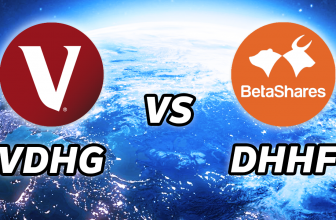The Australian tech sector has seen amazing growth in the last few years and Aussie technology companies have been on an extremely hot run in 2020 returning 13% vs ASX200 with -12% YTD over the same period (Jan 2020 – July 2020). In this post I’m going to cover why I don’t think this is a short-term fad and how you as an investor can gain diversified exposure to the rapidly growing Australian Technology Sector.
Launch of the S&P/ASX All Technology Index
In February of 2020 S&P and the ASX created a brand new index to track ASX-listed technology companies. This index is called the S&P/ASX All Technology Index and was created because in the last 5 years the number of companies who qualified for the index almost doubled from 24 to 46. Which made the index full and diversified enough to actually list. In the same time period the market capitalisation of these companies increased by more than fivefold from $17 billion to $92 billion.
This follows the macro trend of the huge growth of technology companies listing on the ASX. This number has doubled in just the last 5 years from 100 to over 200. For new companies and existing companies to qualify for the index, they must have a market capitalisation of at least $120 million, have a minimum of $120,000 worth of value traded every day, a minimal investable weight factor of 0.3 and a minimum relative liquidity ratio of 30 per cent.
What’s probably been the most reassuring performance metric of the Australian tech companies has been in the face of the COVID-19 Pandemic, where the index has displayed extreme outperformance of the ASX200. The 73 per cent rise in the S&P/ASX All Technology Index since the March 23 low helped the index return a positive 2.8 per cent for the year to May 29. This was not the time to be exposed to the entire market as shown by the 12.7 per cent decline in the ASX200 during that same period.
The longer-term performance of the Australian tech index has been equally if not more impressive. If we go back to 2014 when we first have data points for the index we can see that it has seen ever accelerating growth, with an ever widening gap between it and the ASX200.
The next point I want to talk about is to show why its so important to back industries, countries, or sectors in a diversified manner, as none of us really good (or lucky) enough to consistently pick individual stock winners. In 2020 alone we saw huge volatility even within the Aussie tech index. Seven of the companies in the index have gained at least 30 per cent in 2020 led by Pushpay Holdings, up 85 per cent, and Afterpay, up 62 per cent. But nine companies have actually declined by 30% or more in the same time period. I’ll say it again, whilst I believe in and back the Aussie tech sector, I am not confident in knowing which Aussie tech companies will come out as winners in 10 years time.
Why I think we haven’t missed the opportunity
I know what you’re thinking, have I already missed out on the investment opportunity? Is it too late? Well we can’t know for sure but I think there is still room for quite a few more years of growth. During the dot-com bubble the Nasdaq 100 had a price-earning ratio of 200 and was growing at 40% p.a all through the 1990s. If we look at the yearly returns on the Aussie Tech index they haven’t exceeded 20% p.a since inception and the price-earnings ratio is only 78. However in saying that, its well known that the PE ratio is a poor measure of assessing technology stocks as they are priced based on future earnings potential (it’s also what makes them so volatile).
What’s in the S&P/ASX All Technology Index?
By reaching beyond just the Australian Information Technology sector, the index includes other innovative technology-related industries such as health care technology and companies operating online marketplaces. Likewise, by including companies that have not yet graduated to the S&P/ASX 300, it offers earlier access to these smaller businesses that may have greater room for growth.
The top 10 holdings are currently: Afterpay Ltd, Xero Ltd, Computershare Ltd, REA Group Ltd, Altium Ltd, NEXTDC Ltd, carsales.com Ltd, Appen Ltd, WiseTech Global Ltd and Technology One Ltd. You can see this includes many well-established names in the Australian market like the Real Estate Group and Carsales. With a few up and coming giants like Afterpay and Xero.
How to actually invest in the S&P/ASX All Technology Index
Until now, Australians wanting exposure to a passive investment in a basket of technology stocks have had to opt for global technology ETFs. Although this has been a rewarding strategy, it ignores some of the promising and fastest growing companies listed on the ASX.
At the start of March 2020, BetaShares released their S&P/ASX Australian Technology ETF otherwise known as ATEC. Since inception it has returned 13.29% which is impressive given it launched at the start of March and proceeded to immediately drop sharply due to COVID-19. The ETF has a management fee of 0.48%, whilst not cheap, it is comparable to other technology ETFs which on average have higher management fees than standard diversified ETFs.
If you’re interested in checking out other technology ETFs like ATEC check out my post about the top technology ETFs on the ASX where I cover a range of global and geographically focussed technology ETFs.
Also good to note that it contains all of the WAAAX companies (WiseTech, Appen Ltd, Altium Ltd, Afterpay Touch Group Ltd and Xero Ltd.) the Australian version of FAANG. Which makes ATEC a convenient way to purchase into WAAAX on the ASX which didn’t exist previously.
I think the ATEC ETF is a good option for investors who want to be able to track the returns of the S&P/ASX All Technology Index without having to manually purchase the ever-increasing amount of companies within the index. For most investors it will actually be cheaper to track this index via the ATEC ETF and almost a certainty to result in better adherence to the index as well.
The ETF is useful as a core component of an allocation to the technology sector, with the potential for capital growth or as a complement for investors with an existing allocation to U.S. based technology companies. A good plus for many Aussie investors is that it provides good diversification for portfolios that are heavily exposed to large-cap financial and mining stocks, which for anyone invested in VAS or A200, this is probably a good thing to think about.
Ultimately it’s great that Australian markets are having a bigger focus on the crucial technology industry and that we are seeing fantastic growth from Australian technology companies. But please remember I am not suggesting you should invest in ATEC and as always do your own research before making any investing decisions as I am not a financial advisor and my content is all general in nature.







